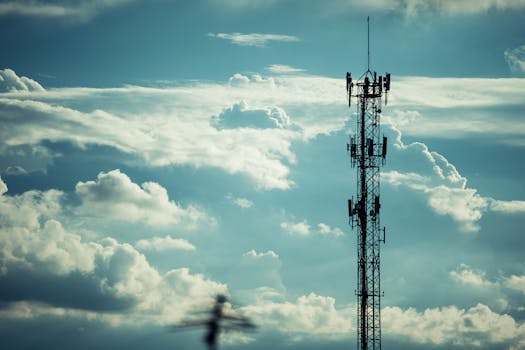
LEO satellites, or Low Earth Orbit satellites, are a type of satellite that orbits the Earth at an altitude of around 160 to 2,000 kilometers. This proximity to the Earth’s surface allows LEO satellites to provide a range of benefits, including faster data transfer rates, lower latency, and more reliable communication services. In this article, we will explore the world of LEO satellites, their applications, and the impact they are having on global connectivity.
LEO satellites have been around for several decades, but recent advances in technology have made them more accessible and affordable. The cost of launching a satellite into orbit has decreased significantly, and the development of new materials and technologies has enabled the creation of smaller, more efficient satellites. This has led to a surge in the number of LEO satellites being launched, with many companies and organizations investing in constellations of satellites to provide global coverage.
How LEO Satellites Work
LEO satellites work by transmitting and receiving data to and from Earth-based stations. They are equipped with transponders, which are devices that receive and retransmit signals. The satellites are also equipped with antennas, which are used to transmit and receive data. The data is transmitted to the satellite via a radio signal, and the satellite then retransmits the signal back to Earth, where it is received by a ground station.
The use of LEO satellites has several advantages over traditional satellite systems. Because they are closer to the Earth’s surface, LEO satellites have a lower latency, which means that data can be transmitted and received more quickly. They also have a higher bandwidth, which allows for faster data transfer rates. This makes LEO satellites ideal for applications that require real-time communication, such as video conferencing, online gaming, and remote healthcare.
Another advantage of LEO satellites is that they can provide coverage to remote and underserved areas. Traditional satellite systems often have a limited range and can be affected by terrain and weather conditions. LEO satellites, on the other hand, can provide coverage to areas that are difficult to reach with traditional communication systems. This makes them ideal for providing internet access to rural and remote communities.
Applications of LEO Satellites
LEO satellites have a wide range of applications, including communication services, navigation, remote sensing, and weather forecasting. They are also being used for scientific research, such as studying the Earth’s climate and monitoring the environment. In addition, LEO satellites are being used for military and defense applications, such as surveillance and communication.
One of the most significant applications of LEO satellites is providing internet access to remote and underserved areas. Many companies, such as SpaceX and OneWeb, are launching constellations of LEO satellites to provide global internet coverage. This will enable people in remote and rural areas to access the internet, which will have a significant impact on their economic and social development.
LEO satellites are also being used for navigation and tracking. They can provide location information and velocity data, which can be used for a range of applications, such as tracking ships and aircraft. They can also be used for precision agriculture, where they can provide data on soil moisture, temperature, and crop health.
Challenges and Limitations of LEO Satellites
While LEO satellites have many advantages, they also have some challenges and limitations. One of the main challenges is the high cost of launching a satellite into orbit. Although the cost of launching a satellite has decreased significantly, it is still a major expense. Additionally, LEO satellites have a shorter lifespan than traditional satellites, which means they need to be replaced more frequently.
Another challenge is the risk of collisions with other satellites and space debris. As the number of satellites in orbit increases, so does the risk of collisions. This can cause significant damage to the satellites and can also create more space debris. To mitigate this risk, many companies and organizations are working on developing technologies to track and remove space debris.
Despite these challenges, LEO satellites are revolutionizing the way we communicate and access data. They offer faster, more reliable, and wider coverage than traditional satellite systems, making them ideal for a range of applications. As technology continues to advance, we can expect to see even more innovative uses of LEO satellites in the future.
Conclusion
In conclusion, LEO satellites are transforming the way we communicate and access data. With their faster data transfer rates, lower latency, and wider coverage, they are ideal for a range of applications, including communication services, navigation, remote sensing, and weather forecasting. While they have some challenges and limitations, the benefits of LEO satellites far outweigh the costs. As the world becomes increasingly interconnected, LEO satellites will play a vital role in providing global coverage and enabling people to access the internet and other communication services.




